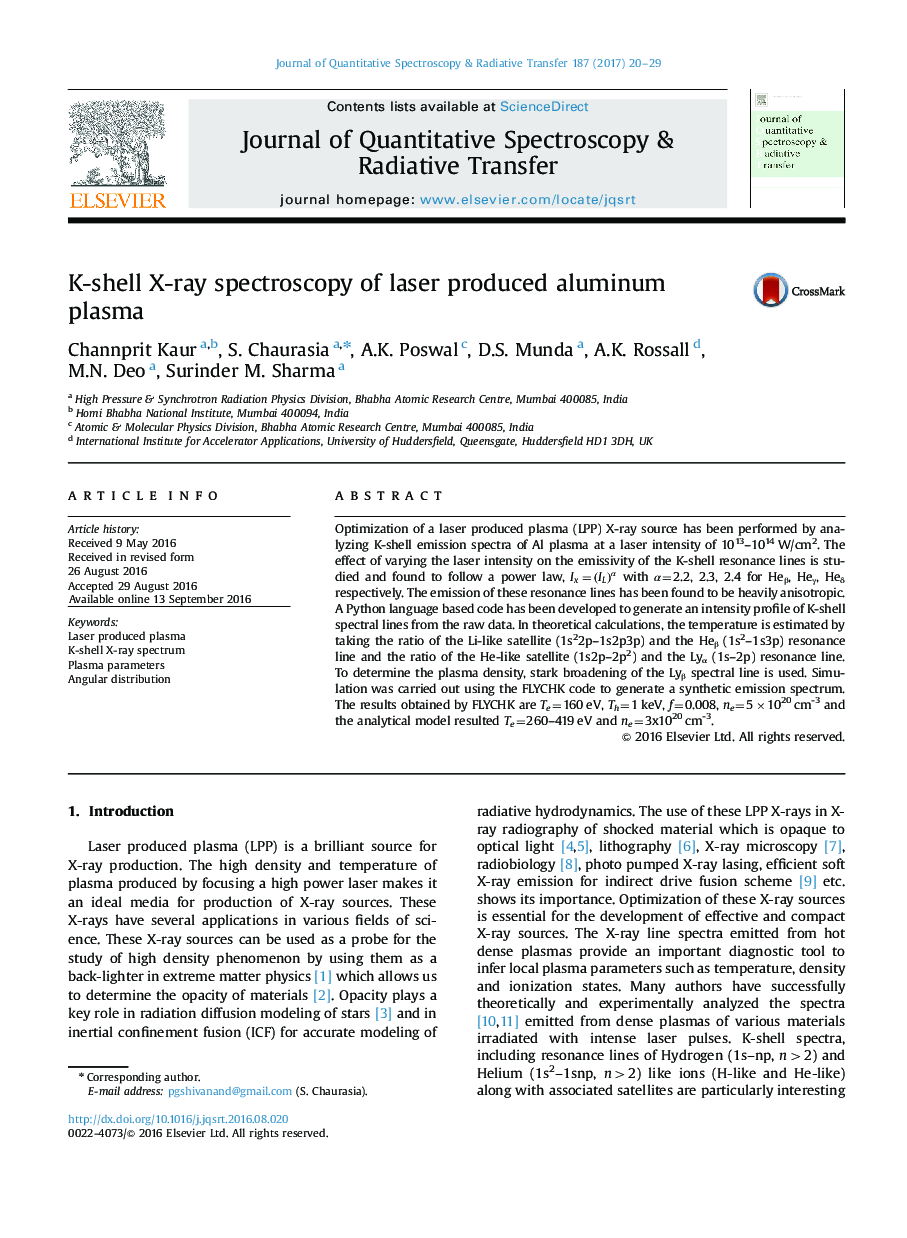| Article ID | Journal | Published Year | Pages | File Type |
|---|---|---|---|---|
| 5427435 | Journal of Quantitative Spectroscopy and Radiative Transfer | 2017 | 10 Pages |
â¢Spectroscopic studies of laser produced aluminium plasma.â¢Our results are validated with the theoretical simulations.â¢It is helpful for the characterization of plasma parameters.
Optimization of a laser produced plasma (LPP) X-ray source has been performed by analyzing K-shell emission spectra of Al plasma at a laser intensity of 1013-1014 W/cm2. The effect of varying the laser intensity on the emissivity of the K-shell resonance lines is studied and found to follow a power law, Ix=(IL)α with α=2.2, 2.3, 2.4 for Heβ, Heγ, Heδ respectively. The emission of these resonance lines has been found to be heavily anisotropic. A Python language based code has been developed to generate an intensity profile of K-shell spectral lines from the raw data. In theoretical calculations, the temperature is estimated by taking the ratio of the Li-like satellite (1s22p-1s2p3p) and the Heβ (1s2-1s3p) resonance line and the ratio of the He-like satellite (1s2p-2p2) and the Lyα (1s-2p) resonance line. To determine the plasma density, stark broadening of the Lyβ spectral line is used. Simulation was carried out using the FLYCHK code to generate a synthetic emission spectrum. The results obtained by FLYCHK are Te=160 eV, Th=1 keV, f=0.008, ne=5Ã1020 cm-3 and the analytical model resulted Te=260-419 eV and ne=3x1020 cm-3.
